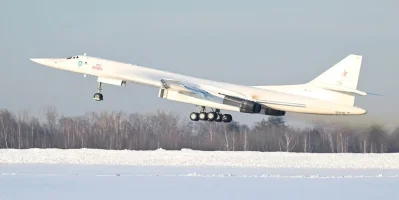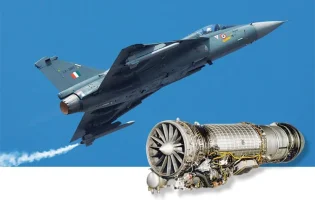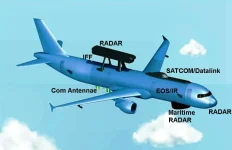- Views: 3K
- Replies: 24
In a monumental push for its strategic autonomy and air power, the Indian government is set to greenlight a massive ₹67,000 crore (approximately $7.8 billion) acquisition of 97 additional Tejas Mk1A fighter jets.
This decision, awaiting final approval from the Cabinet Committee on Security (CCS), marks a significant milestone for India's indigenous defence industry and will firmly establish the Light Combat Aircraft (LCA) Tejas as the future workhorse of the Indian Air Force (IAF).
This new procurement, slated for the 2026-27 financial year, will substantially boost the 'Aatmanirbhar Bharat' (Self-Reliant India) initiative. It follows a 2021 contract for 83 Tejas Mk1A jets, bringing the total number of this advanced variant on order to 180.
The induction of these aircraft is critical for the IAF as it continues to phase out its ageing fleets of Soviet-era MiG-21s and Jaguars, ensuring a modern and capable fighting force.
Developed by the Aeronautical Development Agency (ADA) and manufactured by the state-owned Hindustan Aeronautics Limited (HAL), the Tejas Mk1A is a fourth-generation multirole fighter.
It boasts significant upgrades over its predecessor, including an advanced Active Electronically Scanned Array (AESA) radar for superior target detection, an electronic warfare suite for enhanced survivability, and the capability to launch beyond-visual-range (BVR) missiles.
With an indigenous content level exceeding 65%, the aircraft is a testament to India's growing engineering and manufacturing prowess.
While the Tejas program is a landmark achievement, it has faced hurdles, particularly concerning production timelines. The delivery of the first Mk1A from the previous order was delayed due to supply chain disruptions, primarily related to its American-made General Electric F404 engines, and pending certifications.
However, HAL has since ramped up its efforts, with the first aircraft now expected for delivery by mid-2025 from a new production facility in Nashik.
To meet the increased demand from the IAF, HAL is significantly expanding its manufacturing capabilities. Its existing production lines in Bengaluru can produce 16 jets annually.
The new Nashik facility will add a capacity for another eight aircraft, with HAL aiming to achieve a combined annual production rate of up to 24 jets by 2026.
This expansion is crucial not only for domestic supply but also to cater to growing international interest from countries such as Argentina, Egypt, Nigeria, and the Philippines.
This mega-deal extends far beyond a simple military purchase; it is a major economic catalyst for India’s entire aerospace and defence ecosystem.
The Tejas program directly involves a network of over 500 Indian companies, including a large number of Micro, Small, and Medium Enterprises (MSMEs). This extensive supply chain fosters technological growth, creates skilled jobs, and builds a robust industrial base.
The government's recent emphasis on competitive bidding is set to further integrate private sector giants like Larsen & Toubro and VEM Technologies, which are now manufacturing critical sub-assemblies such as fuselages, enhancing the overall efficiency and dynamism of India's private defence manufacturing sector.




